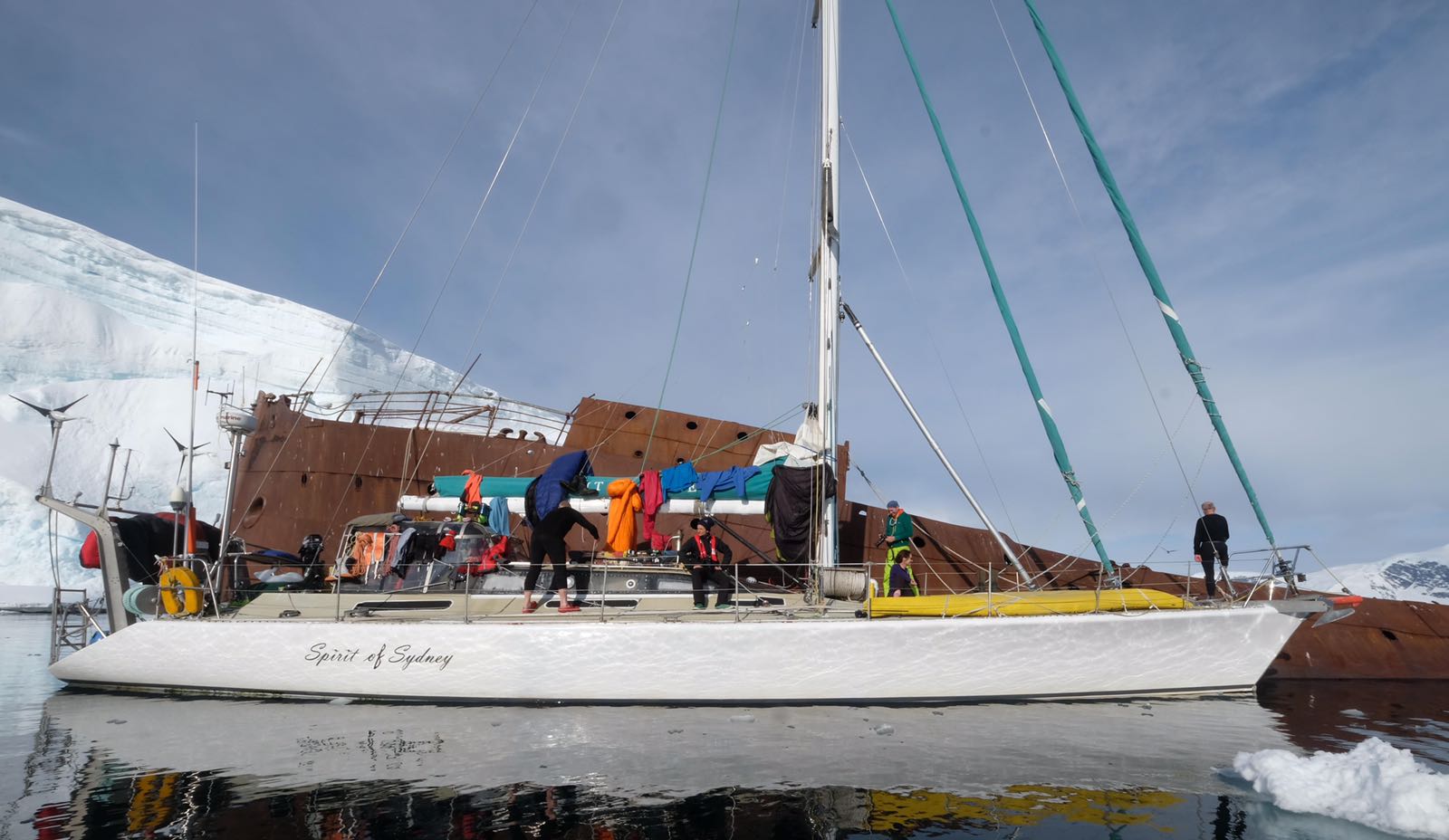We spent 2 nights and 3 days there,one at Whaler’s Bay and one at Telefon Bay. What a fascinating place. The island is horseshoe shaped, with a narrow entrance 500 m, wide to the East guarded by rocks on the right hand side, and known as Neptune’s Bellows. It was one of the first parts of Antarctica to be discovered in 1820 to 1821 by a British sealing voyage on the ship Dragon captained by Captain Mcfarlane.
The island measures 15km in maximum diameter and Mount Pond, is the highest point at 539m. It is an active volcano, and we sailed into the centre of the caldera. On landing at Whaler’s Bay, we could see steam rising from the beach , and penguins enjoying the warmth. We enjoyed a similar experience near the Argentinian base Deception where we lay on the beach and toasted our backs/ It was blissful, and extremely hot. We didn’t need to dig down to the shingle to gain extra heat, and we feared that we would melt our clothes. It was like having a hot stone massage or a hot bath. Digging down to form a hot bath on the beach is very much frowned upon by conservationists but Darrell our skipper has filled the zodiac with warm water to create a hot tub in tub in the past.
The island became a hub of the whaling industry and several companies from different nations worked the seas. At the peak there were 13 floating factories processing the whales. Onshore, you can still see the massive oil containers , processing plant and the remains of huts which housed the whalers. There is also a cemetery and a hanger for planes as there used to be a runway. All of this was very sad but also an interesting historic monument.
The whalers left in 1931 after a slump in oil prices. From 1944 the Royal Navy took over the abandoned buildings. There was a permanent settlement until 1969 . The Navy handed over to FIDS, the Falkland Islands Dependency survey in 1945. This was a precursor to the British Antarctic Survey. It was evacuated in 1967 after a volcanic eruption and then in 1969 another eruption caused a mud flow through all the buildings and destroyed a large area and changed the coast line dramatically.
There are still an Argentinian and Spanish bases and vast quantities of Chinstrap penguins. The rookery at Bailey Point is the largest at 200,000 pairs. We had the huge privilege of accompanying Tom Hart and his team of scientists from Oxford University on a walking trip to a very little visited rookery on the south side of the island opposite Sail Rock. It was a very dramatic sight, the sea was a beautiful turquoise colour and penguins were surfing in to the rocks and being pursued by a leopard seal. Mark captured a photograph of one being taken with his monster zoom lens.
You can follow the scientific work of Oxford University zoology department via Penguin Watch and Penguin Lifeline. The focus of the study is the destruction of krill and also on genetics of certain colonies to learn about the movement of penguins, or in the case of gentoos, the lack of it. They use stealth cams to capture photos of the colonies once a day, and also satellite imagery to count penguins.
For those of you reading this who want an update on this trip… we are doing some skiing! We managed a lovely tour above Telefon Bay and enjoyed the descent so much that we did it all again. It was a stunning view from the top of the whole caldera. Whilst we have been on Deception, the weather kept on improving and it was an excellent idea to enjoy the sheltered harbour before heading off to the Peninsula.
We are now moored at Ciervo Cove, by a gentoo colony and will go off camping and skiing tomorrow. Overnight we will be on iceberg watch, as there are big ones floating everywhere and it took 3 people to fend one off just now. There were several sheathbills on board and we got a great view of them. They are like white pigeons and clean up penguin poo around penguin colonies so have also got another similar name.
Lou


Louise I am re-reading South Pole Odyssey, to get a feel of your trip. I am sure you will complete better than hey did. XXX
Thank you for writing such a detailed report. I am so pleased for you that you are having such an enjoyable time and that everyone is well and that you are seeing lots of penguins. With love and best wishes.
It sounds quite marvellous – I can’t wait to see photos and catch up when you get back. It sounds a great mixture of adventure and exploration as well as being in a series of Planet Earth for real. Hard to beat! xx